Palm - Mexican Fan
Abundance: uncommon
What: fruit
How: raw, dried
Where: landscaping, wild along Gulf Coast.
When:
Nutritional Value:
Dangers:
Fan-shaped fronds have spiny stalks. Fruit is blue-black, pea-sized, sweet with a large, inedible seed.
Buy my book! Outdoor Adventure Guides Foraging covers 70 of North America's tastiest and easy to find wild edibles shown with the same big pictures as here on the Foraging Texas website.
Palm - Pindo, Jelly
Abundance: common
What: fruit
How: raw, jelly, wine
Where: landscaping, Gulf Coast region
When:
Nutritional Value:
Dangers: none
Pindo palm.
Nearly-ripe pindo palm fruit (turns yellow/gold when ripe).
Pindo palm crown and needle-type leaves.
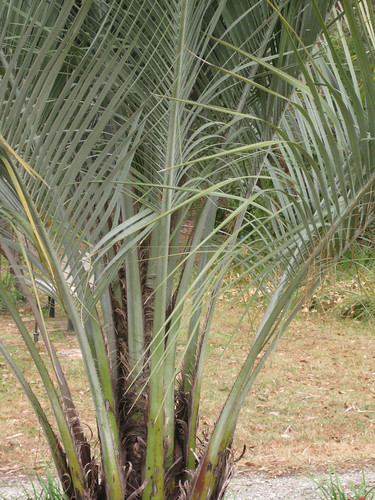
Closeup of a pindo palm leaf. They have a gray/blue tint.
Pindo palms are short, squat trees with long, gray/blue-green fronds. Pindo palm fruit appears in the summer and is yellowish-orange, about the size of figs. They taste great but it's large, inedible seed and stringy flesh makes eating it raw a challenge. The preferred method of eating Pindo palm fruit is as jelly hence it's common name, "Jelly Palm". Pindo palm fruit naturally contains pectin but only barely enough to jellify and it is recommended that extra pectin be added. Also, the seeds must be removed before cooking the fruit down or something in them will interfere with jellification.
This fruit has also been used to make wine though if you don't destroy the natural pectin with some pectinase the wine will end up cloudy.
A good quality palm oil can be pressed from the fruit's large seed. If you don't have an oil press try grinding up the fruit in a blend then boil it. The oil will float to the top of the water and can be skimmed off once the water cools down.
These palms usually remain as short, squat trees. At one time they were a prized possession as the fruit was plentiful, delicious, and used many ways. Nowadays they are often considered to be a nuisance, messy tree. How crazy is that?!
Buy my book! Outdoor Adventure Guides Foraging covers 70 of North America's tastiest and easy to find wild edibles shown with the same big pictures as here on the Foraging Texas website.
Palm - Queen
What: fruit
How: raw, jelly
Where: landscaping, Gulf Coast region
When:
Queen palm.
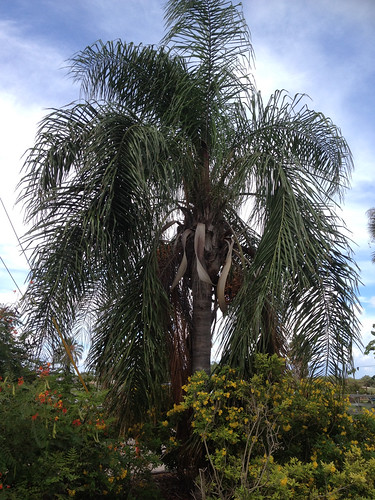
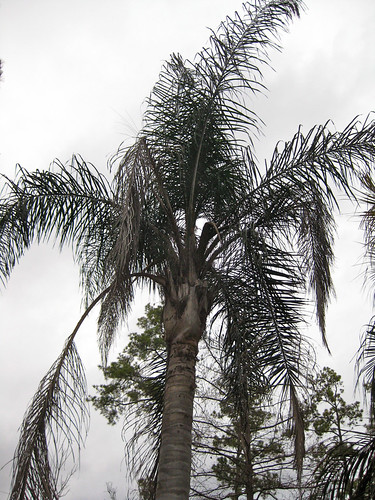
Queen palm base.
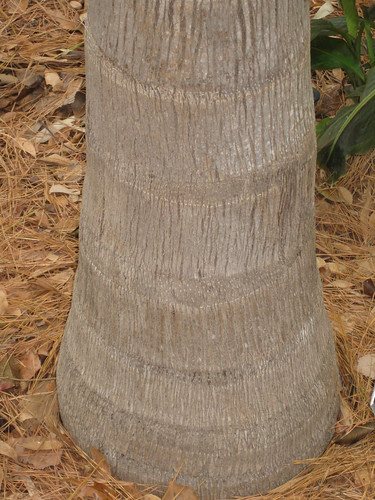
Queen palm trunk.

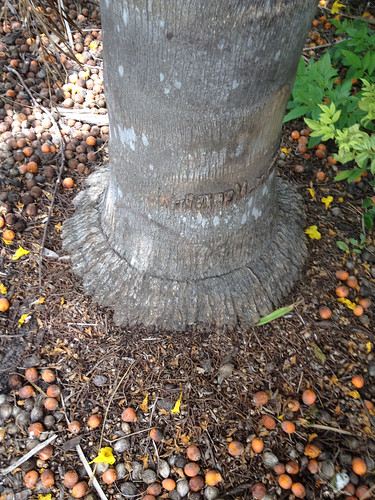
Queen palm crown. Needle-type leaves.

The orange fruit appear in late summer/early fall.
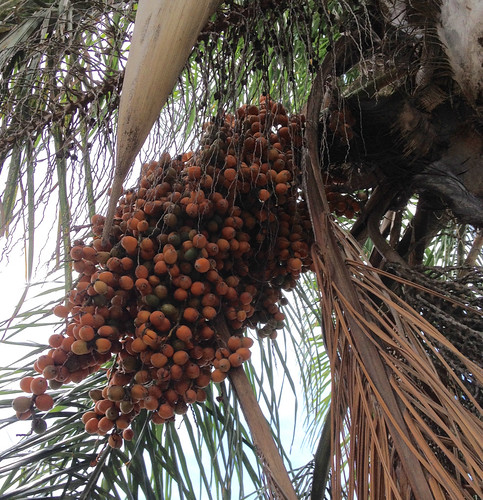
Close-up of the fruit. You can see the fibers nature in the older, brown/gray fruit.
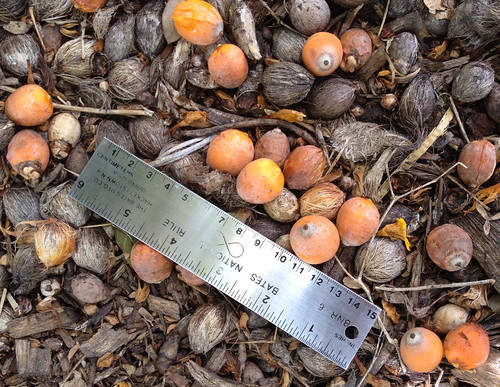
Standing majestically, Queen palms live up to their names and so are often used as a landscaping palms. Their trunk is rather smooth and gray. Its leaves can be up to fifteen feet in length. The individual fronds are somewhat stiff. If you want to add one to your yard they prefer acidic, moist soil and are somewhat salt-tolerant if you are near the coast.
In the late summer/fall appear large clusters up to six feet long of orange, one inch fruit. The flesh of this fruit is sweet but fiberous. Just chew/suck the sweetness from the fruit and then spit out the fibers. Like the Pindo palm, these sweet fruit can also be used to make jelly or wine. A good quality palm nut oil can be extracted from the seeds though some sort of oil press is recommended for this.
The fruit is often 20' or more feet off the ground which makes harvesting tricky. Laying a tarp down beneath the tree and then either shake the tree (difficult) or toss a Nerf ball the clusters to dislodge the fruit. A Nerf ball is hard enough to dislodge the fruit but soft enough to not damage them.
Buy my book! Outdoor Adventure Guides Foraging covers 70 of North America's tastiest and easy to find wild edibles shown with the same big pictures as here on the Foraging Texas website.
Palm - Texas Sabal
Abundance: common
What: fruit, palm heart
How: fruit raw; palm heart roasted, pickled
Where: landscaping, wild from southern to central Texas
When: summer, fall, spring
Nutritional Value:
Dangers: none
Texas sabal palm.

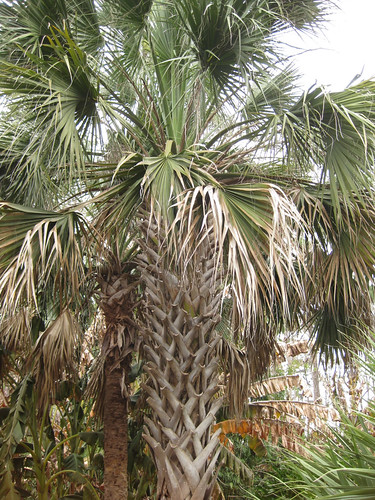
Texas sabal palm base.
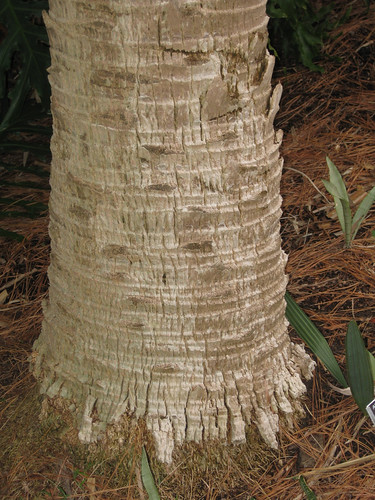
Texas sabal palm trunk and crown.
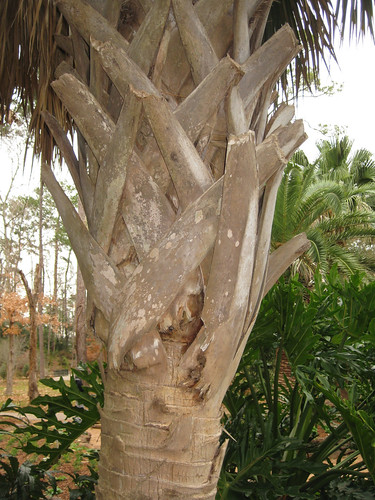
Texas sabal palm fan-type leaves.
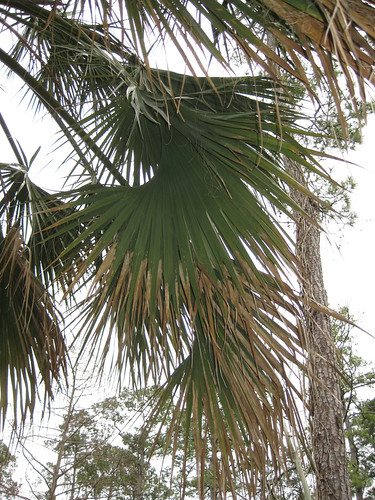
Fruit dark purple, .5” in diameter, thinly fleshed over a large seed, ripens in summer.
The palm heart is also eaten, but harvesting it kills the palm. Palm hearts (terminal buds) are the "root" the center-most, youngest leaf at the very top of the tree. It is harvested by cutting off the top of the tree and carving out the palm heart which kills the tree.
Leaf fibers make great cordage.
Buy my book! Outdoor Adventure Guides Foraging covers 70 of North America's tastiest and easy to find wild edibles shown with the same big pictures as here on the Foraging Texas website.
Palm - Windmill
Abundance: common
What: flower buds and flowers (inflorescences)
How: raw or cooked
Where: landscaping
When: spring
Nutritional Value:
Dangers:
Windmill palm.
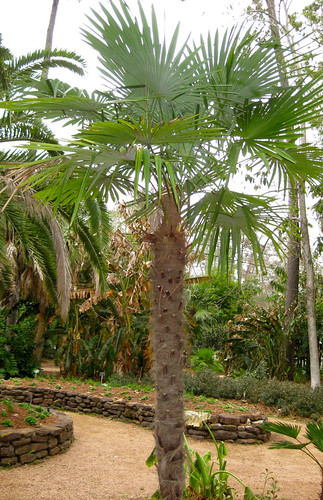
Windmill palm base.
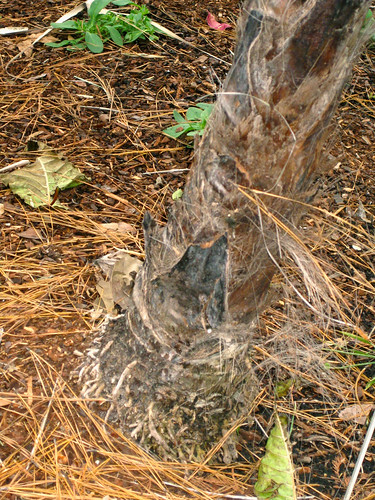
Windmill palm trunk.
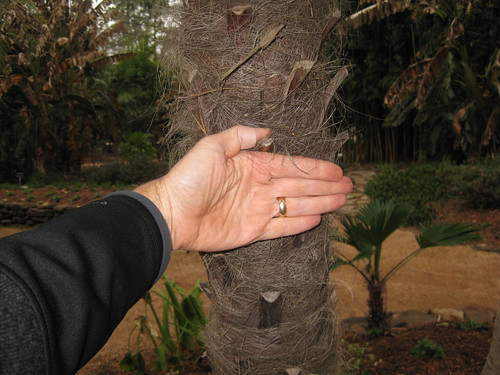
Windmill palm fan-type leaf.
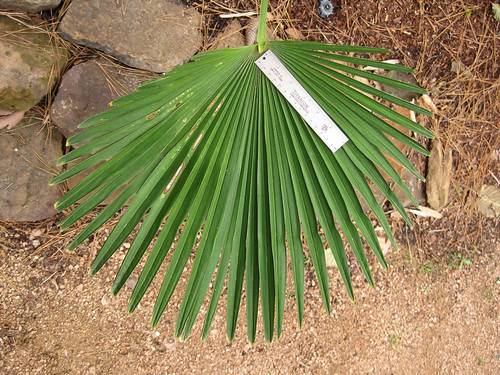
Native to China, this palm actually prefers cold climates and doesn't do well in hot, humid areas such as the Gulf Coast region. The leaf fibers make an excellent cordage.
The flower buds and flower bodies are eaten raw though I bet they could be candied, too.
Fruit ranges in color from yellow to black.
Buy my book! Outdoor Adventure Guides Foraging covers 70 of North America's tastiest and easy to find wild edibles shown with the same big pictures as here on the Foraging Texas website.
Privacy & Amazon Paid Promotion Statement
I use third-party advertising companies to serve ads when you visit this website. These companies may use information (not including your name, address, email address, or telephone number) about your visits to this and other websites in order to provide advertisements about goods and services of interest to you. If you would like more information about this practice and to know your choices about not having this information used by these companies, click here.
I participate in the Amazon Services LLC Associates Program, an affiliate advertising program designed to provide a means for me to earn fees by linking to Amazon.com and affiliated sites. The prices you pay for the item isn't affected, my sales commission comes out of Amazon's pocket.
*These statements have not been evaluated by the Food and Drug Administration. This product is not intended to diagnose, treat, cure, or prevent any disease.




